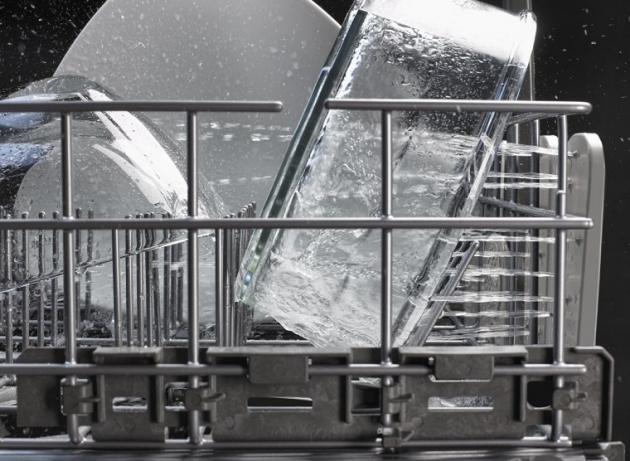If you’ve ever emptied your dishwasher to find that items are still dirty or are damaged, the chances are that it was loaded incorrectly. Most of us have our own preferences on how to load a dishwasher, but this doesn’t mean that every way is the right way. Each dishwasher model has its own correct loading method to deliver optimum performance, but there are some basic principles that remain the same in every model.
Don’t Rinse, Scrape
Any leftover food or harder items need to be removed from your dishes, but it is not necessary to rinse them before they’re loaded into your dishwasher. If you’re planning on running your dishwasher immediately, there is no need to rinse. If you are concerned about your dishes being perfectly cleaned, use a rinse cycle, so any residue doesn’t dry onto the dishes. This will use far less water compared to using your faucet and is far less time-consuming.
Don’t Compromise the Rotation
All your dishes need to be loaded, so they are not overlapping or stacked. This allows maximum water coverage for optimum cleaning. Therefore, you need to ensure that any taller items such as cookie sheets or pan handles will not stop the spray arm from moving. If the spray arm is impeded, it can cause problems with the motor as it works harder to try and get the arm moving again and this can create a breakdown issue. If you’re unsure about whether an item will impede the spray arm, gently spin the arm before you set the cycle running and check it can move freely. Remember that water also needs to properly drain for the best drying results, so you won’t want the spray arm to concentrate on one specific area and leave a puddle.
Keep Delicates on Top
Plastic items, cups, glasses and other delicate items should only be placed on the top rack to avoid damage. Most dishwasher models have tines to keep your glasses and cups in rows. This will not only help to prevent against breakages and reduce water spots.
You can use the top rack for small bowls, utensils, pans and other smaller items. Bowls should be loaded in the center of the rack for stability and ensure that stemware is not touching any other item to avoid breakages.
Optimum Loading of the Bottom Rack
Soup bowls, plates, platters and other items are best washed on the bottom rack. The plate edges can be overlapped if you have a large load, but don’t allow bowls to nest as the spray will not be able to reach all the surfaces. Cookie sheets, cake pans, and other large items should be kept along the sides and back of the rack to avoid impeding the spray arm. If you have a dirty casserole dish or pan, place it face down on the bottom rack for maximum coverage.
Use the Basket Properly
The silverware basket is an excellent resource for washing all of your cutlery and smaller utensils, but it needs to be properly loaded. Some items will need to be placed pointing down while others need to be pointing up. This will help to avoid nesting and protect you from being hurt when you’re unloading. Sharp knives should always be pointing down to avoid mishaps when unloading. If you have particularly sticky items such as peanut butter covered cutlery, try pointing it up. Smaller items such as jar lids, corn cob holders, and baby bottle caps should only be placed in a section of the basket with a hinged cover, or you may find they will bounce all around the inside of your dishwasher.
A dishwasher is considered an essential appliance in many homes, and if your model is not delivering proper cleaning, it may be time for an upgrade. You can explore the options with this online collection of dishwashers or speak to a home appliance expert for a more specialist service.

